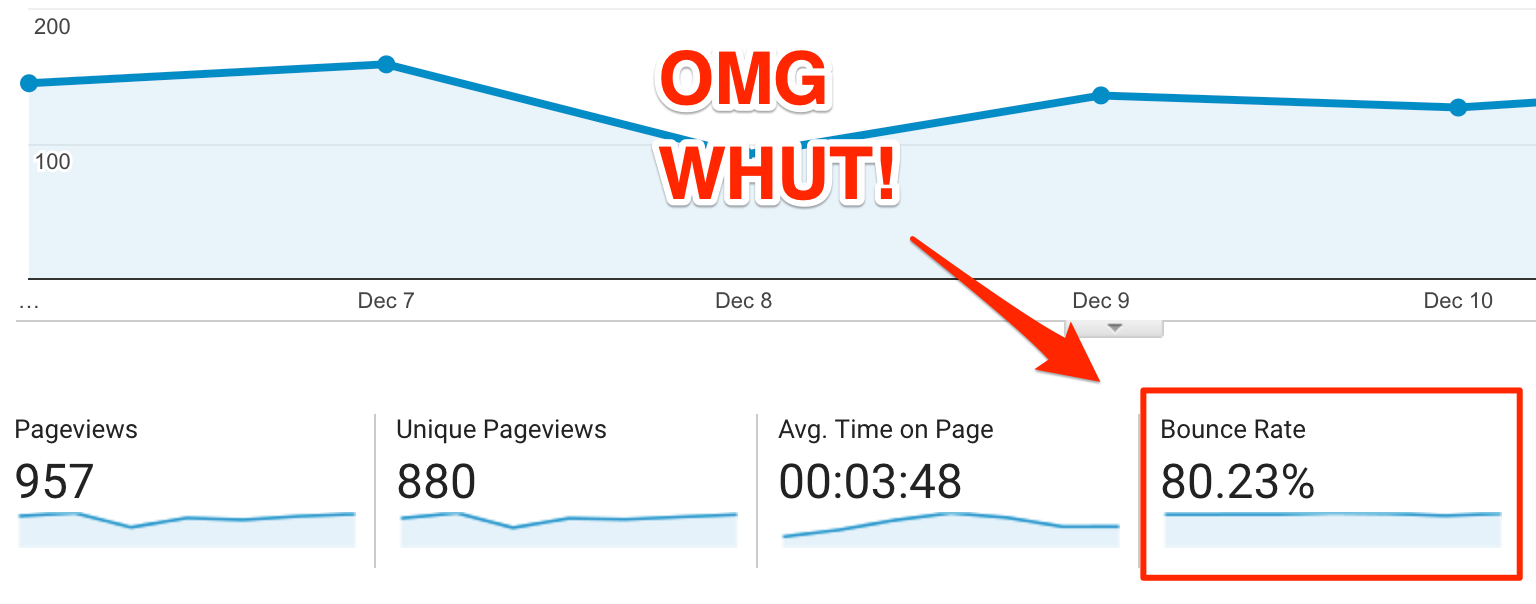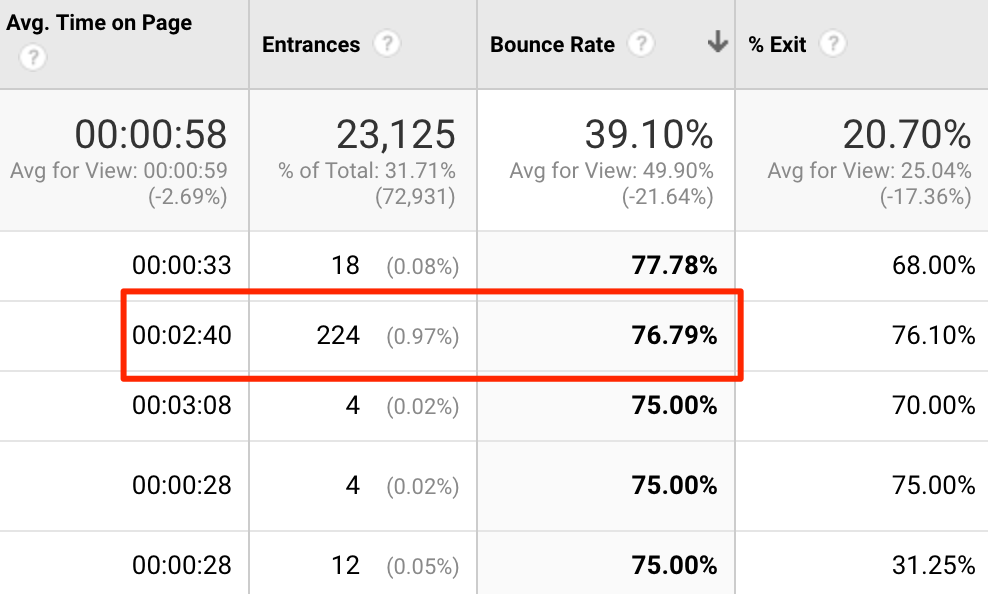
This is something I wrote a while ago and send to my clients whenever they ask about bounce rates. I thought you might find useful too.
What Is Bounce Rate?
The bounce rate is a percentage of bounces that occur on pages of your site. A bounce occurs when someone visits your site and leaves without any engagement with the page they land on. Or if they stay on the page but don’t interact with it within 30 minutes, it also counts as a bounce.
Here is what Google says about bounce rates

Is Bounce Rate a Good Metric?

One of the most common mistakes I see people make is looking at overall site bounce rates in Google Analytics. This is a very poor metric because just a few poorly performing pages can totally throw off the numbers. Instead look at related types of pages or individual pages at a time.
Also, bounce rates are not always a bad thing. For example, someone may visit a page of your site, find what they need, then leave. For example, they might read an article and learn everything they need to know, they might look at your service page and call you, or they might write your business address down and visit your store in person later. This would be considered a bounce in Google Analytics, but these sessions could result in conversions later, which would obviously be a good thing.
Another metric to consider in conjunction with Bounce Rate is Time on Page. If people are leaving a page on your site immediately, there may be an issue. But if people are spending a decent amount of time on the page (however much time it takes to read most of the content), your page has likely provided value to the visitor.

If you want to take this analysis to a more advanced level, check out this awesome post from Glenn Gabe on using scroll depth tracking, adjusted bounce rate, and time on page to determine content quality.
What is a Good Bounce Rate?
According to RocketFuel, a bounce rate:
- Between 26%-40% is very good
- Between 41%-55% is average
- Between 56%-70% is a little high, but could be typical for your site or industry
- Anything over 70% is bad (unless it’s a blog, news, or event)
In regards to blog posts, high bounce rates are common because people read blog posts to learn. This is one of the first steps of the conversion funnel. They may come back again later.
How to Improve Bounce Rates
There are many ways to improve your bounce rates.
- Adjust page titles to be more descriptive of the content
- Adjust meta descriptions to be more relevant, while also enticing readers to click
- Show users the page content they expect to see when they land on the page
- Add more content to the page if necessary. Readers should have their questions/concerns addressed
- Headers and subheaders should guide visitors to your CTA
- Make your Call To Action prominent and relevant
- Improve page load speed
- Use internal linking to move visitors through the site
- Make sure your site is mobile-friendly
You should also make your content easily digestible
- Avoid walls of text
- Use images and bullet points
- Shorten paragraphs
- Use subheadings
- Use bold for key points
